The majority of Balinese practice a form of the Hindu religion which they call Agama Hindu Dharma ("Religion of the Hindu doctrine"). Also called Agama Tirtha ("Religion of the Holy Waters"), it represents a unique amalgamation of foreign Hindu and Buddhist elements that were grafted onto a base of preexisting, indigenous religious customs. Since independence in 1945, the Balinese have become more self-conscious of their religion and have strengthened their religious organization. Ibis has resulted in the establishment of the Satya Hindu Dharma in 1956, and the Parisada Hindu Dharma Bali in 1959. The state philosophy, Pancasila, is also having an impact on Balinese Hinduism as well.
Hinduism and Buddhism arrived in Bali partly via Java and partly direct from India, between the 8th and 16th centuries. Elements of the two religions have developed further and merged here. The Indian division into four castes has also been adopted, and religious practices are closely connected with social hierarchy. Balinese society is separated into four main groups: brahmana, satriya, wesya and anak jaba or sudra, which are in turn subdivided into many more.
Basic principles
Balinese Hinduism encompasses a vast range of practices and doctrines, dominated by Siwaitic characteristics. Siwa is the main god, manifesting himself as Surya, the Sun. Buddhistic elements in the Balinese Hindu Dharma derive from a Tantric form of Mahayana Buddhism (the Buddhism of the "Great Vehicle" - practiced in China, Tibet, Korea and Japan). Only small groups of Balinese Buddhists exist today, mainly brahmans living in the village of Budakling, in Karangasem. However in Banjar, in northwest Bali, a Buddhist monastery has been founded which is strongly influenced by Theravada Buddhism (practiced today in Sri Lanka, Burma and Thailand).
The three basic principles of the Hindu religion are a knowledge of the epics (the Mahabharata, Ramayana and commentaries), a knowledge of philosophy and theology, and ritual worship (puja) connected with devotion (bakti) and offerings (banten). The central questions in Balinese Hindu philosophy are: where from and where to? Where does man come from, how can he attain release? In which offspring will he reincarnate? What is the origin of the cosmos an how should one behave to guarantee the continuation of cosmic processes? These questions and their answers can be expressed in visual symbols like a mountain with a tree of life, a lotus pond, or a heavenly nymph.
The stability of the cosmos is expressed by emphasizing the quadrants of the compass and their colors, and the gods with their mounts and attributes. Oppositions like creation-annihilation, good-bad, heaven-earth, and fire-water are visualized in the nadir and the zenith. The swastika, wheel of the sun, is the symbol for the Hindu religion in general.
The five ritual categories
The purpose of every ritual is to cleanse objects and people. Holy water, fire and ash
can all be used. This can also be done by rubbing or touching with objects symbolizing
purity - for instance eggs, geese ' ducks leaves of the dabdab tree. It is believed that
one's soul may have accumulated impurities through evil deeds during one's life or previous lives, resulting in punishment in hell followed by rebirth as a miserable creature. In order to avoid this, the deceased and his soul have to be purified by means of fire (the cremation) and holy water. A soul which has been released becomes a god (dewa, bhatara).
Many Balinese rituals - tooth-filings, cockfights, cremations and others - can be organized at any time, by anyone who needs them. Many others are held only on specific occasions according to the Balinese calendar. In all, there are literally hundreds of rites and festivals that each person participates in during his lifetime, and a great deal of time and expense is devoted to them.
Yadnya is a term of Sanskrit derivation meaning "worship" or "sacrificial rite" that is collectively applied to all Balinese ceremonies. Each rite may have any number of meanings ascribed to it, but all serve to create a sense of well-being and of community, both of which are important concepts to the Balinese. They are also a means of maintaining a delicate balance among the various forces in the Balinese cosmos. The Balinese themselves distinguish five ritual categories, the so-called panca yadnya.
Ritual exorcisms
The first of these, the bhuta yadnya, are rites carried out to appease evil forces, personified in the form of ogres, witches and demons, and to cleanse man and his surroundings from their influences. Ritual offerings known as Pacaruan are set out by housewives every two weeks to appease and banish these baleful influences from the house compound.
An annual pacaruan offering ritual on a much larger scale, the Taur Agung, is carried out on the day before Nyepi, the Balinese "New Year." Its aim is the purification of an area from the bad influences that have accumulated during the previous year. The rite is usually carried out at a crossroads, supervised by a pedanda high priest. Five sorts of fluids are used - water, arak (palm liquor), palm wine, rice wine and blood. Blood is thought to be one of the most purifying ingredients and in most cases has been taken from a cock which has been killed during a ritual cockfight. Afterwards, men carry torches through the village and make a huge commotion beating gongs, bamboo tubes, and so on, to expel the demonic forces. The same is done in every house compound.
More elaborate exorcisms are undertaken once in 5, 10, 25 and 100 years. In 1979 and 1989 elaborate Pancawalikrama rites took place in the temple of Besakih, and the greatest ritual exorcism of them all - the Eka Dasa Rudra purification of the universe which is held only once every century - was also celebrated in Bali's "Mother Temple" in 1979 to mark the transition to the Saka year 1900.
Rites of passage
The manusa yadnya or life-cycle rites are designed to ensure a person's spiritual and material well-being. From conception until after death a person is believed to be in the company of the "four companions" (kanda empat). After one's birth these are expressed as personifications of the amniotic fluid, the blood, the vernix caseosa and the afterbirth. The latter is buried by the entrance of the sleeping house and covered with a river stone. The umbilical cord is often kept in a little silver box hung around the neck. The companions will protect if treated well; if not, they may create problems.
Twelve days after birth the ceremonial cutting of the navel string occurs. At this time the child is given a temporary "baby-sitter" - a deity called Dewa Kumara. This deity is instructed by his father, Siwa, to protect the baby until its first tooth appears. A small shrine next to the child's bed is hung with flowers and bananas as an offering for the protecting spirit.
Forty-two days after birth, a ceremony is held to cleanse the mother, who is thought to be impure after birth. On this day also the natural force of a "brother/sister" which has accompanied the baby since birth departs, and the child is now considered to be fully human. Another ceremony is held three months after birth to consolidate the baby's body and soul. At this time, the child's official name is announced and he or she may touch the earth for the first time.
After 210 days, the baby's first "birthday" or otonan is celebrated. The hair is cut for the first time and the mother makes an offering in the village temple to announce that her child has arrived in the village.
The next major ceremony occurs as the child reaches the age of puberty. This is the famous "tooth-filing" ceremony whose aim is to symbolically eradicate the animal or "wild" nature in a person - held for girls on the occasion of her first menstruation; for boys when his voice changes. During the ceremony, both upper canine teeth are filed down slightly. A person should now behave as an adult, able to control his or her emotions.
Full adulthood begins after marriage, and the person is then treated as a full-fledged member of the community If the child is the eldest or youngest son, he will replace his father in carrying out certain village duties.
Completing the cycle and returning the soul safely to the other world are the pitra yadnya or ceremonies for the dead (see "Cremations"). After death, the soul of the deceased joins the ancestors, and is worshipped with the gods in special shrines within the
house compound. One hopes to regularly communicate with one's ancestors, and every Balinese has a sense of well-being knowing he or she is protected by them.
Rites for gods and priests
Dewa yadnya ceremonies are performed to honor the divinities. Such ceremonies are a communal responsibility, taking place during temple anniversaries either once every 210 days of the wuku year, or once in a lunar-solar year of 360 days. The gods or divine ancestors are then invited to come down to earth and reside in their temples. For at least three days they are feasted and regaled with offerings, music, dance and hymns. Priests perform the rituals to summon the gods; those who support the temple pay their homage.
Apart from these anniversaries, major temple festivals are held on Galungan and Kuningan - two holy days according to the Balinese calendar. Another important festival is Tumpek Uduh - held every 210 days when useful trees and garden plants are honored with offerings. On this day no tree may be cut nor fruits taken. In a similar way, rituals are performed for household and agricultural tools on Tumpek Landep and for domestic animals on Tumpek Andang.
Ritual worship is supervised by specialists - the priests. Their main task is to prepare holy water for the believers. People of higher castes cannot receive holy water from priests belonging to a lower caste. The highest and most distinguished priests are the brahman pedanda, who can offer holy water to any person, because they occupy the highest rung in the social hierarchy. Members of the satriya dalem and wesya castes may use priests from their own class, the resi, but they prefer a pedanda. The Pasek, Sengguhu, Pande and Bali Aga groups all have their own priests as well, but being so low in the hierarchy, they can only offer holy water to members of their own group.
The so-called resi yadnya are rituals to ordain priests. To be ordained as a pedanda, a brahman must study with a high priest for many years. A ritual ordination or padiksan is then organized for him by the family with the help of other villagers. During the ritual, the candidate undergoes a symbolic death and cremation. Thereafter, he is "reborn" as a pure man. After his ordination, his guru continues to act as his advisor and it is only after another year of study that he is able to perform rituals on his own. Male priests are consecrated along with their wives. This means that the wife may take over the priesthood after the death of their husband.

 36 rooms with private facilities, air-conditioning, private bath with cold & hot water, telephone and television, stereo system and has private balcony.
36 rooms with private facilities, air-conditioning, private bath with cold & hot water, telephone and television, stereo system and has private balcony.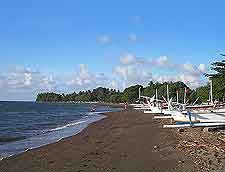 Bali Tourist Attractions: Lovina Beach
Bali Tourist Attractions: Lovina Beach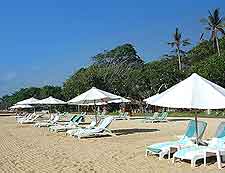 Bali Tourist Attractions: Sanur Beach
Bali Tourist Attractions: Sanur Beach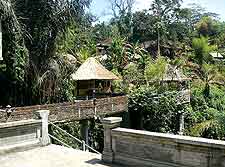 Bali Tourist Attractions: Ubud
Bali Tourist Attractions: Ubud Bali Tourist Attractions: Surfing
Bali Tourist Attractions: Surfing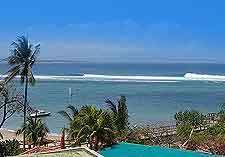 Bali Tourist Attractions: Denpasar
Bali Tourist Attractions: Denpasar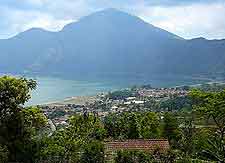 Bali Tourist Attractions: Kintamani
Bali Tourist Attractions: Kintamani